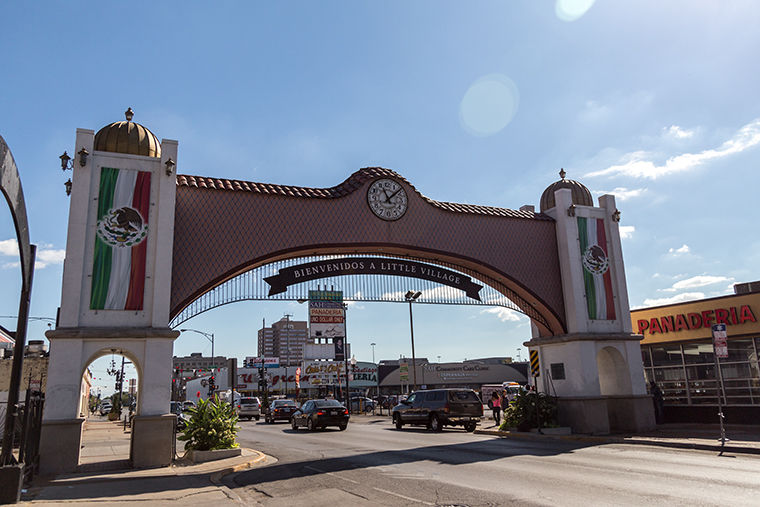Chicago’s strong Latino community saves their own by bringing aid, resources to Mexico, Puerto Rico
October 2, 2017
Chicago and some of its neighborhood organizations have shown support for Mexico and Puerto Rico after devastating natural disasters hit both areas.
A 7.1 magnitude earthquake hit Mexico City Sept. 19, killing at least 216 people. The following day, Puerto Rico was hit by crippling Category 4 Hurricane Maria, which left the U.S. territory flooded and without electricity. Chicago—with its Latino population as its largest minority group—has responded loudly to provide aid.
“This is a great opportunity for us to show solidarity in the fact that these unfortunate incidents happened simultaneously,” said Carlos Hernandez, executive director of the Puerto Rican Arts Alliance. “We should come together on this and show our respective communities that we will continue to work and be concerned about each other.”
After receiving multiple phone calls from concerned community members, PRAA and the National Museum of Mexican Art created the Chicago for Mexico and Puerto Rico Relief Fund. Set up at Wintrust Bank, it is collecting donations to be divided evenly between Mexico and Puerto Rico, according to Hernandez.
“When an incident of this magnitude shuts down a country, where there’s no water, no electricity [and] communication is very minim[al], there’s this anguish that our people are in desperate need,” Hernandez said. “When you feel that hopeless because you see the media covering Puerto Rico and Mexico, you begin to mobilize. It’s almost a human instinct to save your own, to save your people.”
Other Chicago-based groups have launched similar efforts to provide aid to Mexico, including Chicago Con Mexico—a citizens’ committee of individuals and leaders from Mexican organizations. Its main goal is to raise money for Mexican areas most affected by the earthquake, said Claudia Lucero, member of Durango Unido En Chicago and a Chicago Con Mexico committee member. The committee has also opened an account at the Second Federal bank in Little Village to collect donations, she added.
“There was a tragedy, but those are the moments that bring us all together to work for our one goal: to help our brothers and sisters who either lost a relative, a friend, their homes [or] their place of work,” said Lucero, who was born and raised in Mexico. “There [are] materials you can recover, but you cannot recover a life.”
In wake of the hurricane and disaster, the city launched a website identifying reputable charities, causes and ways to make a difference, affirming the city’s support for affected victims and families.
This is not the first time Chicago has lent a hand to Mexico City in response to a natural disaster. In September 1985, an 8.1 magnitude earthquake hit the city, which left 10,000 dead and 30,000 injured. At the time, Maria de los Angeles Torres was working as director of the city’s Latino Affairs’ commission under former Mayor Harold Washington.
At the time of the crisis, Washington said that whatever Mexico City needed, Chicago would try to help, she recalled.
Washington turned over city-owned warehouses to serve as donation centers, while also working closely with the Mexican Consulate, trying to gauge the country’s greatest needs, said de los Angeles Torres, who is now executive director of the Inter-University Program for Latino Research and a Latin American and Latino Studies professor at the University of Illinois at Chicago. However, she noted the 1985 crisis may have required a stronger, more extensive response because of the high casualties.
“A lot of the work that has been going on at this stage is from community-based organizations,” she said. “I don’t think the response from City Hall was as strong as it was [in 1985], but the community is in another place where there are a lot more institutions able to take the lead.”







